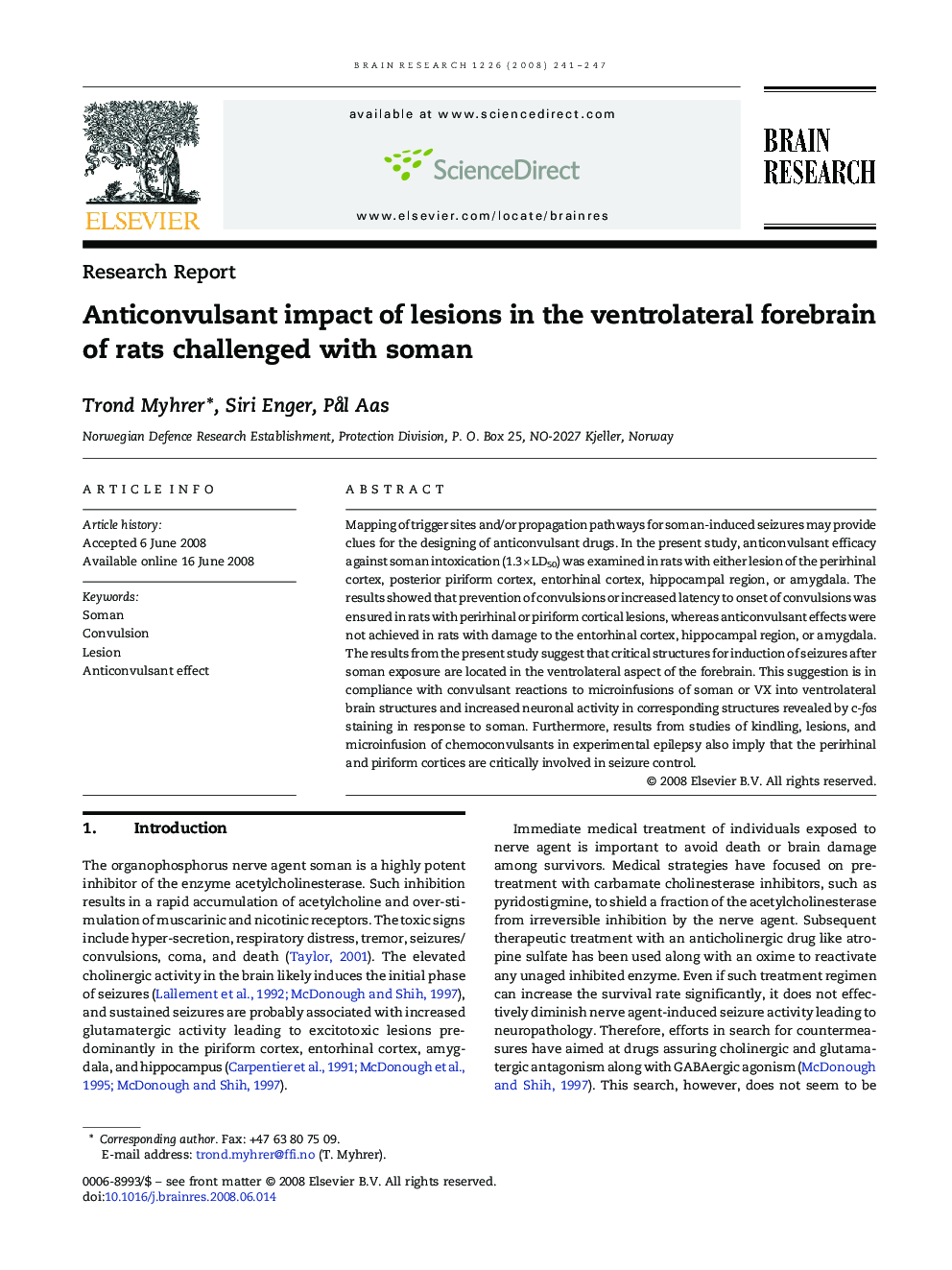| Article ID | Journal | Published Year | Pages | File Type |
|---|---|---|---|---|
| 4329411 | Brain Research | 2008 | 7 Pages |
Abstract
Mapping of trigger sites and/or propagation pathways for soman-induced seizures may provide clues for the designing of anticonvulsant drugs. In the present study, anticonvulsant efficacy against soman intoxication (1.3Â ÃÂ LD50) was examined in rats with either lesion of the perirhinal cortex, posterior piriform cortex, entorhinal cortex, hippocampal region, or amygdala. The results showed that prevention of convulsions or increased latency to onset of convulsions was ensured in rats with perirhinal or piriform cortical lesions, whereas anticonvulsant effects were not achieved in rats with damage to the entorhinal cortex, hippocampal region, or amygdala. The results from the present study suggest that critical structures for induction of seizures after soman exposure are located in the ventrolateral aspect of the forebrain. This suggestion is in compliance with convulsant reactions to microinfusions of soman or VX into ventrolateral brain structures and increased neuronal activity in corresponding structures revealed by c-fos staining in response to soman. Furthermore, results from studies of kindling, lesions, and microinfusion of chemoconvulsants in experimental epilepsy also imply that the perirhinal and piriform cortices are critically involved in seizure control.
Related Topics
Life Sciences
Neuroscience
Neuroscience (General)
Authors
Trond Myhrer, Siri Enger, PÃ¥l Aas,
